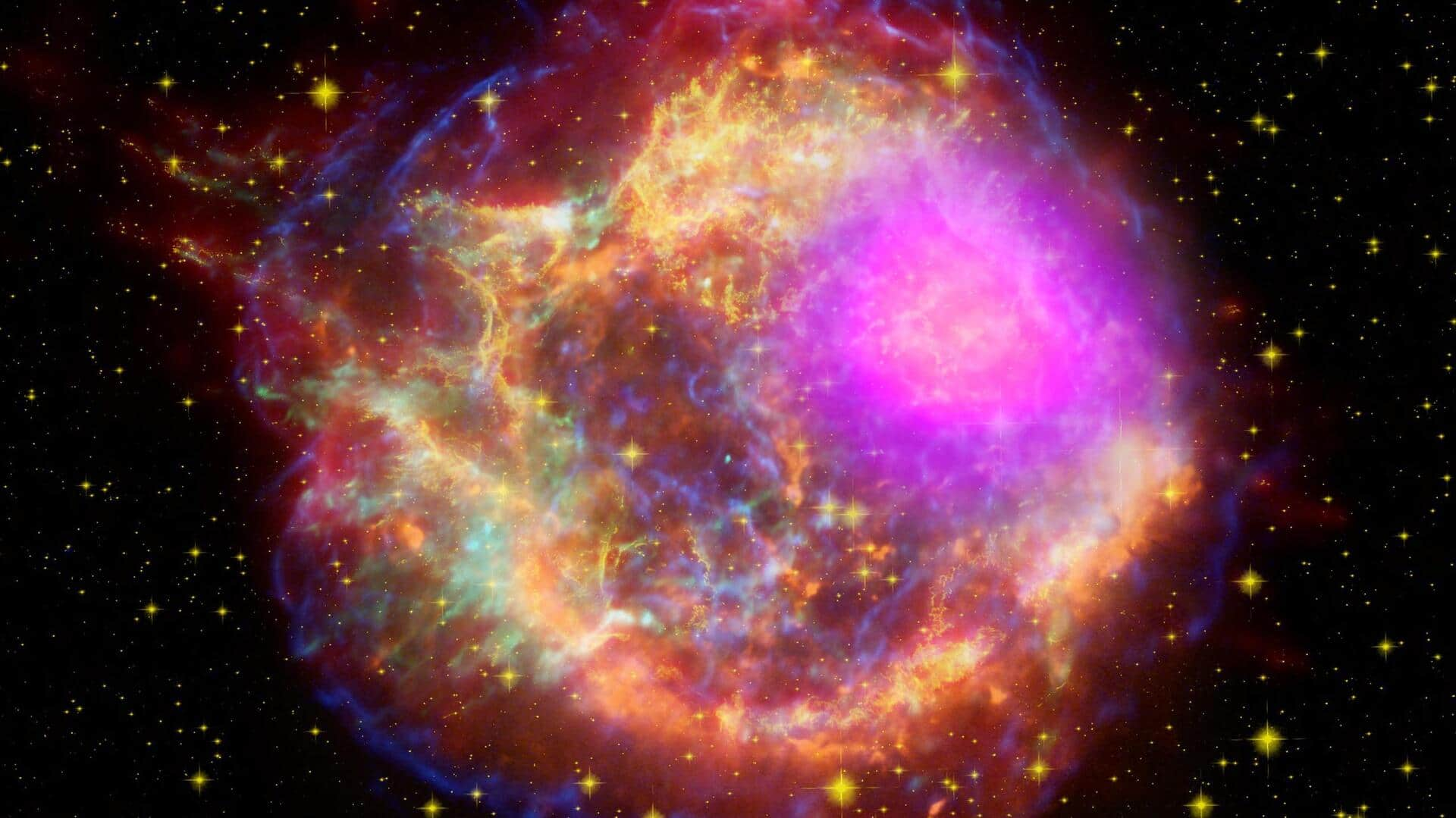
Astronomers unravel mystery of rare, metal-producing supernovae
What's the story
A team of international astronomers led by Martin Solar and Michal Michalowski from Adam Mickiewicz University in Poland, has made a significant discovery about the origins of Type Ic supernovae.
These rare cosmic events are known for their lack of hydrogen and helium, and their role in producing many metals.
The researchers found that these supernovae aren't always the result of solitary massive stars.
Stellar impact
Binary companions influence Type Ic supernovae
Michalowski explained to ScienceAlert that the complexity of massive stars only grows with more investigation.
"We know that their evolution and fate depends on their mass, then we learned that the details depend on how much they are enriched in metals. Now it gets obvious that companions can also greatly influence their lives," he said.
This finding emphasizes the role of binary companions in shaping the fate of these stellar explosions.
Stellar collapse
Understanding the process behind collapse
Type Ic supernovae occur when massive stars run out of fuel and their cores collapse.
This occurs after all hydrogen in the stellar core has been fused into heavier elements, and the star's core elements become so heavy that they need more energy to fuse than what fusion releases.
When this nuclear furnace fails to release enough energy, outward pressure decreases, and the star's dense core succumbs to gravity.
Elemental mystery
The enigma of missing elements
The core's violent collapse into an ultra-dense neutron star or black hole triggers the outer layers to blast out into space, forging even heavier metals in the ejecta.
But, unlike other supernovae, Type Ic supernovae show no detectable hydrogen or helium in their expanding outer shell.
This absence has puzzled scientists as these lighter elements should have remained in sufficient quantities within the atmosphere, despite being depleted from the stellar core.
Theoretical solutions
Two theories to explain the absence of hydrogen, helium
Two theories have been proposed to explain the missing hydrogen and helium in Type Ic supernovae.
One theory suggests a star around 20-30 times the mass of our Sun could produce strong stellar winds capable of blowing away these elements.
The other theory proposes a binary companion—a smaller star close enough to siphon off these elements from a star between around eight and 15 times the mass of our Sun.
Stellar remnants
Clues from supernovae environments
Michalowski and his team studied the molecular gas left behind by Type Ic supernovae and compared it with the molecular gas left behind by Type II supernovae.
They discovered that the hydrogen in both clouds was identical, suggesting that Type Ic supernovae come from less massive stars.
This finding challenges previous assumptions about these cosmic events and sheds new light on their origins.